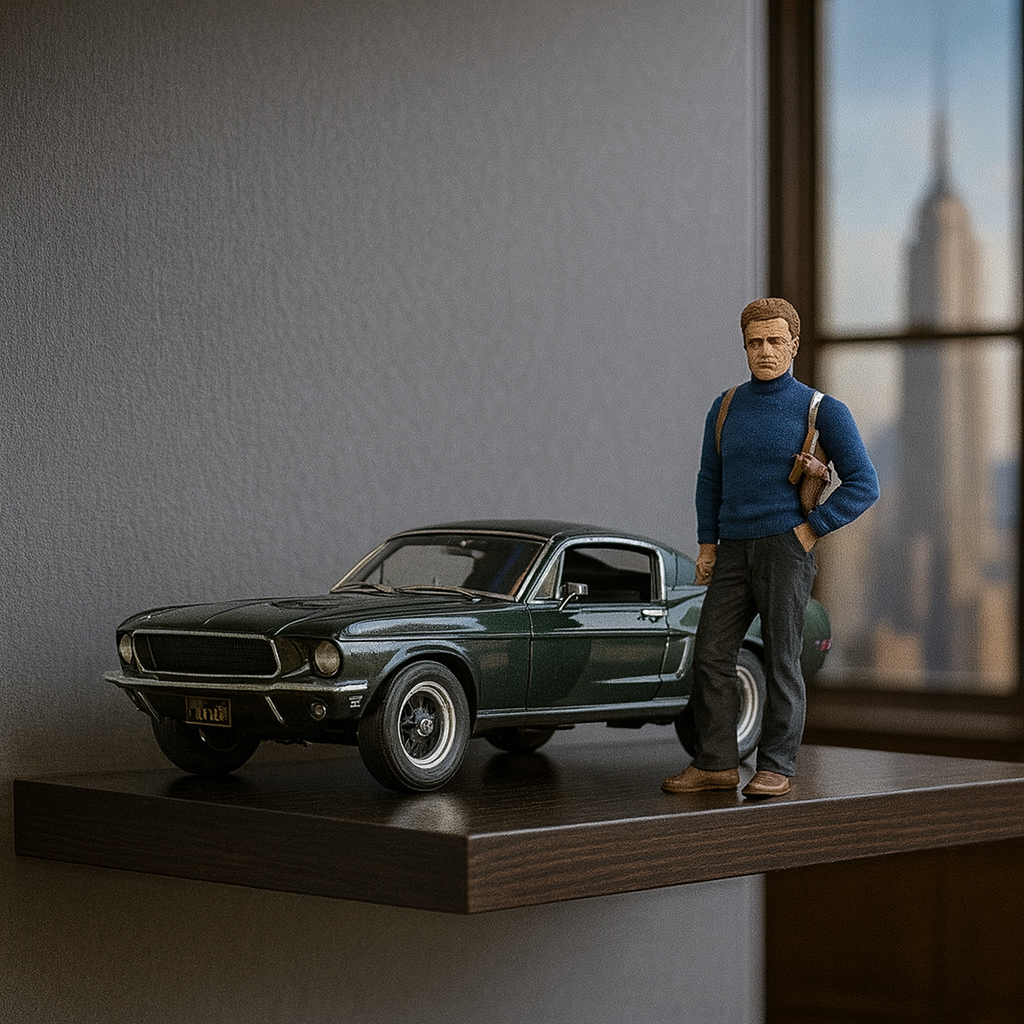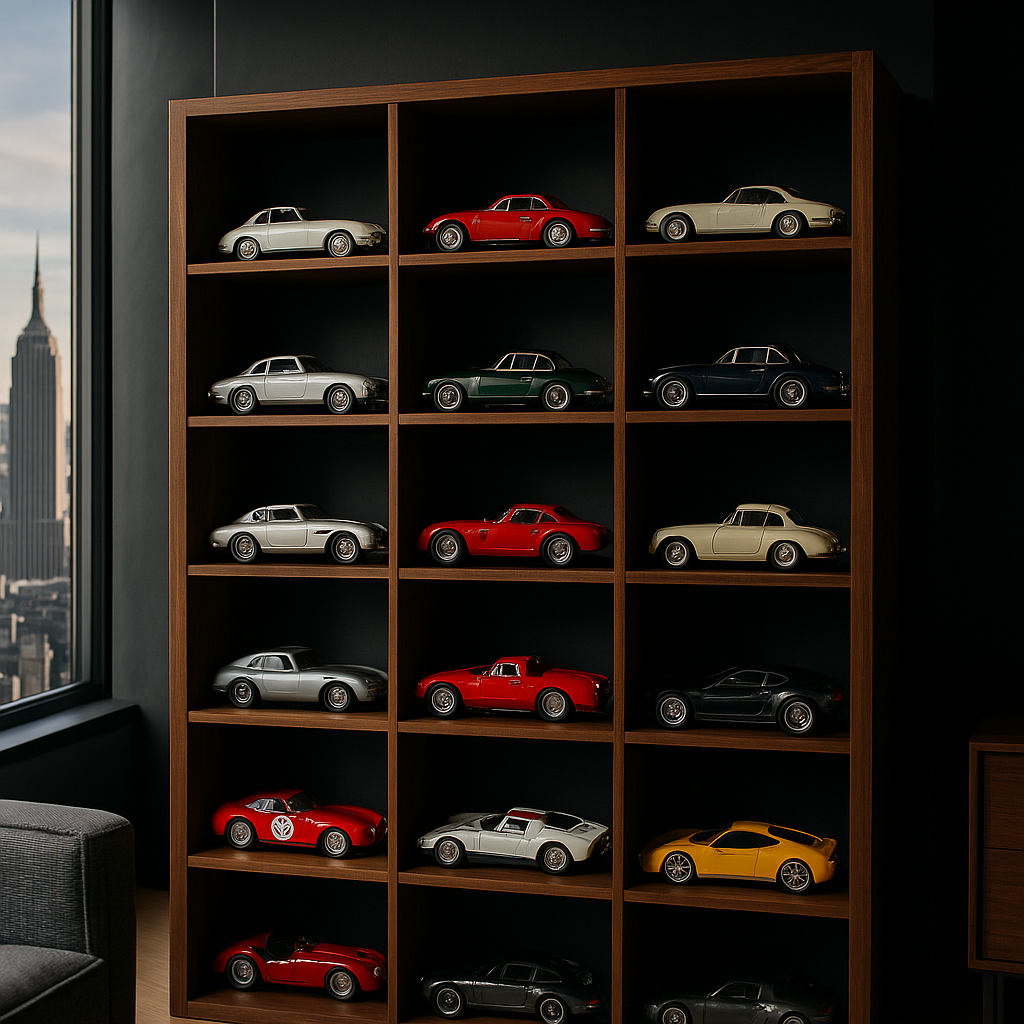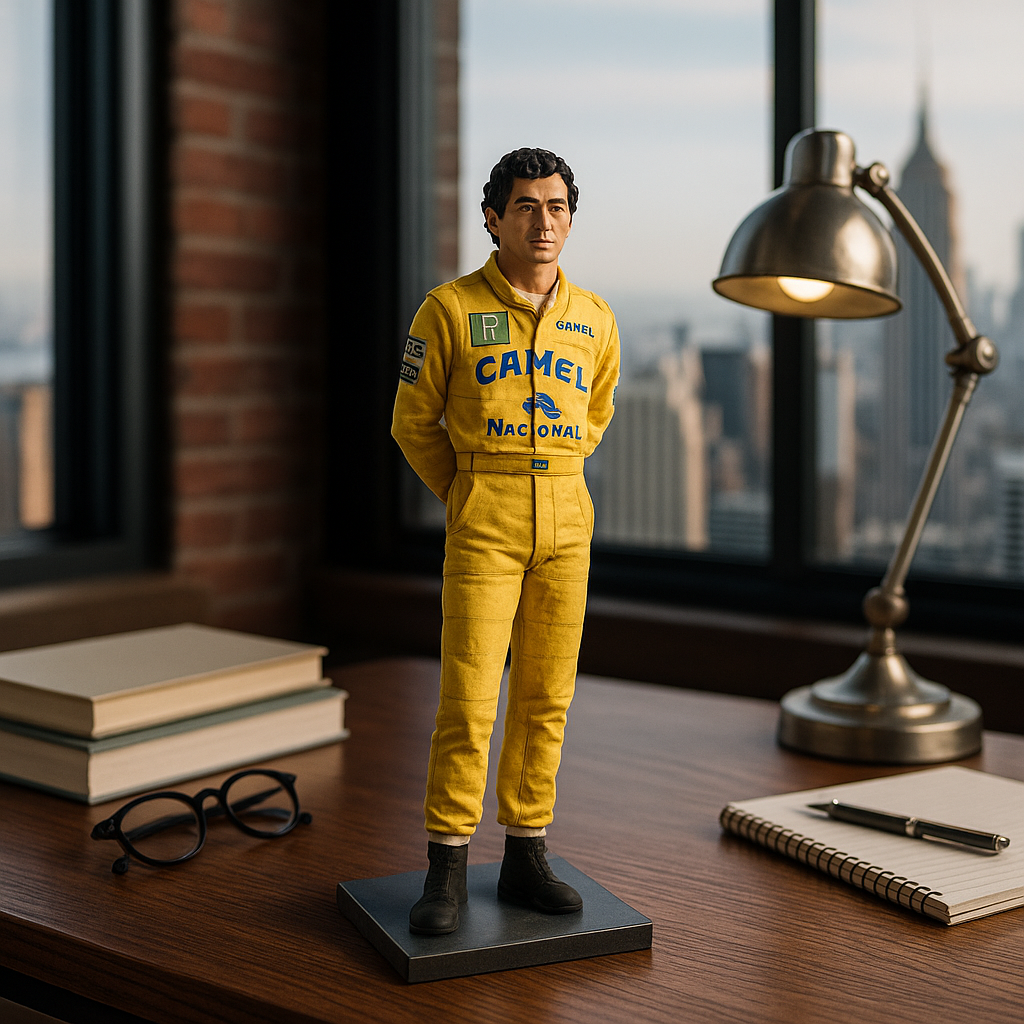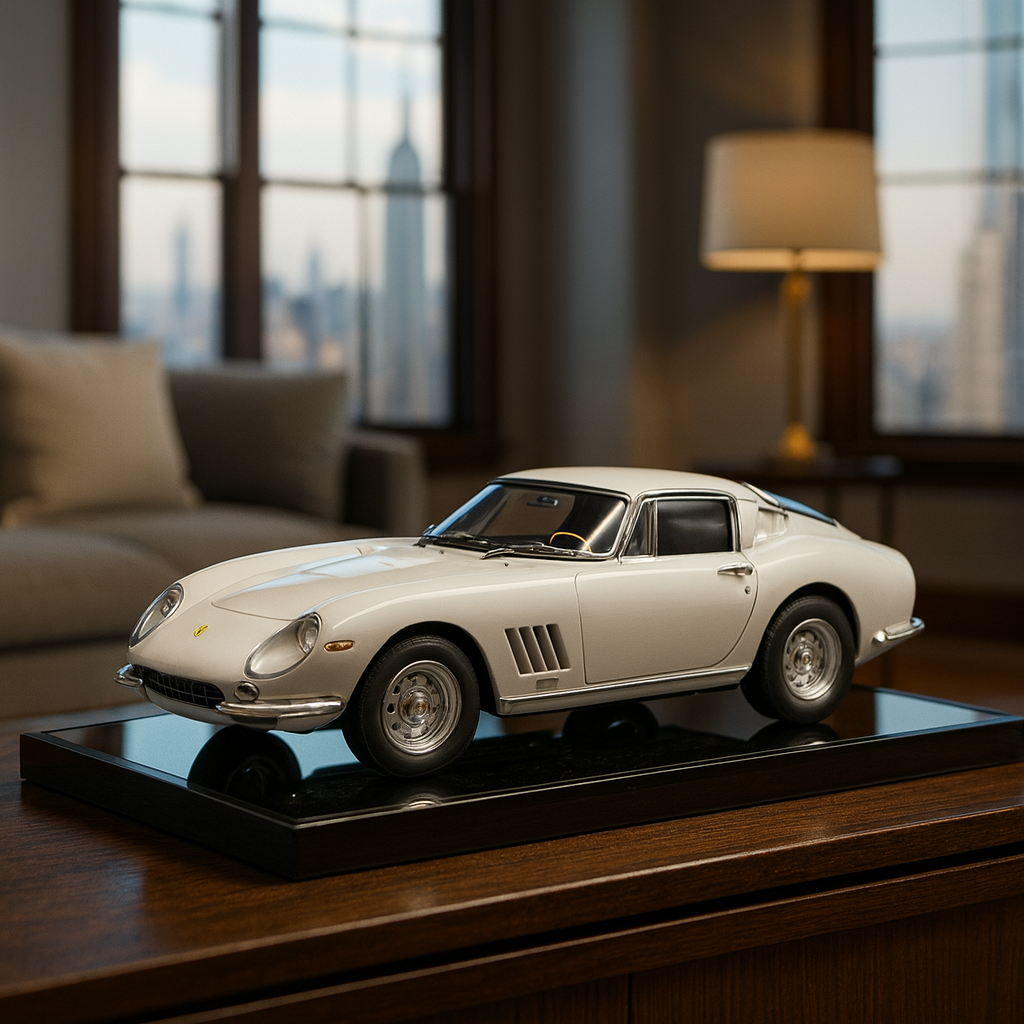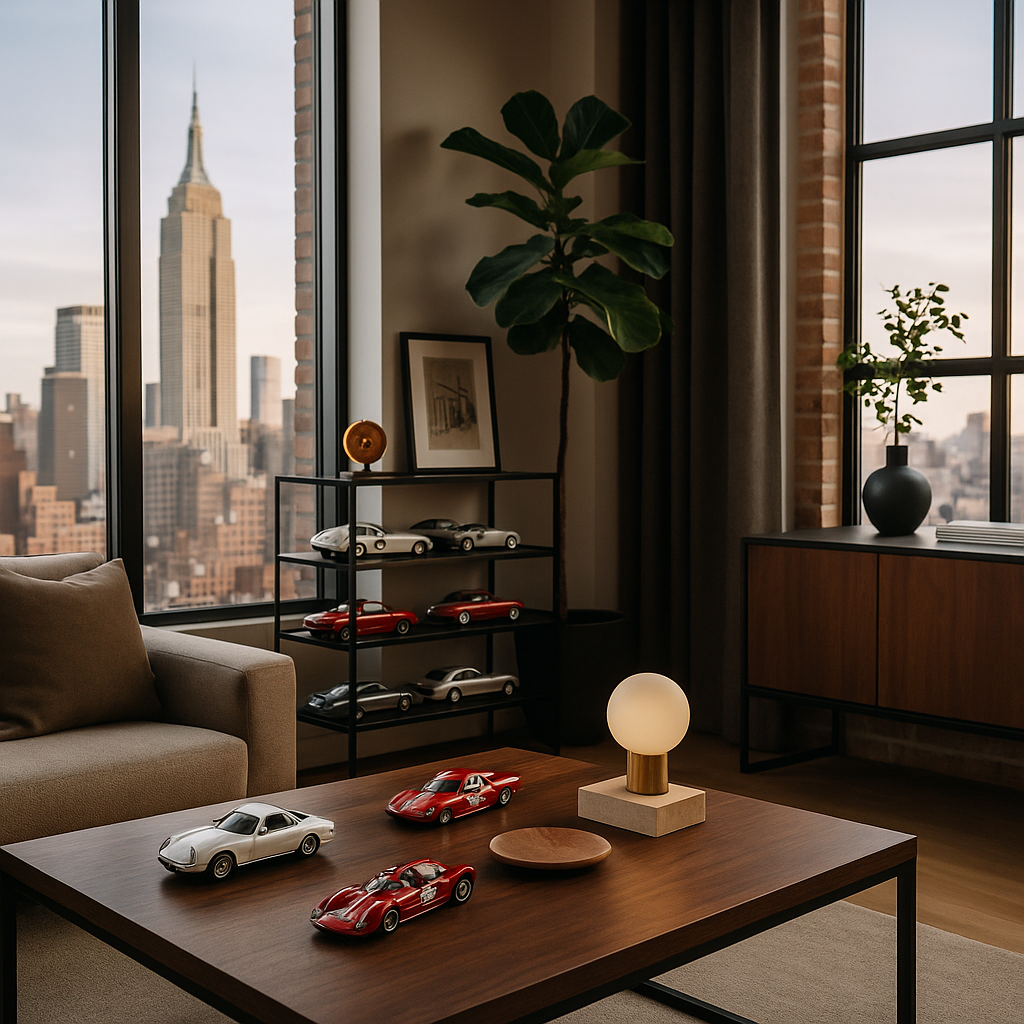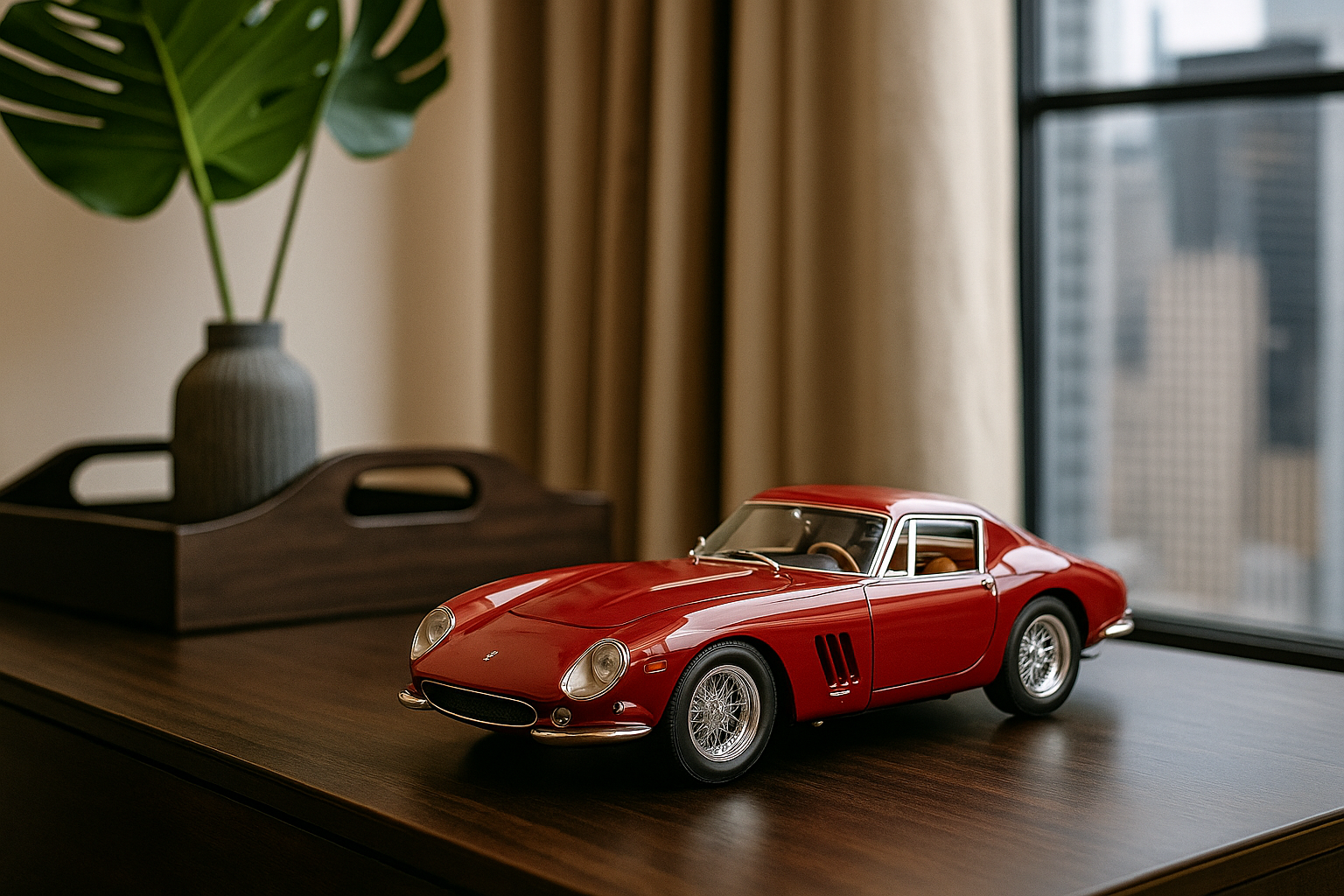
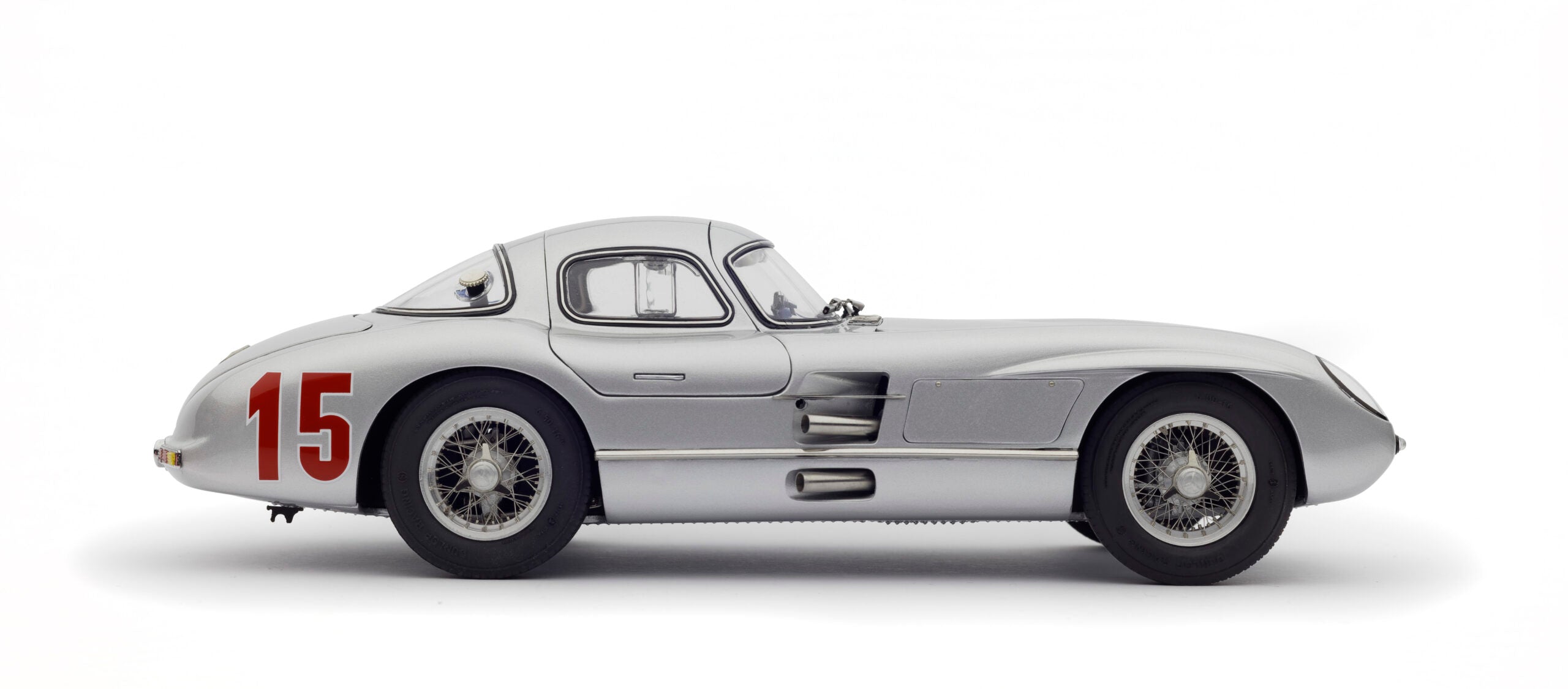

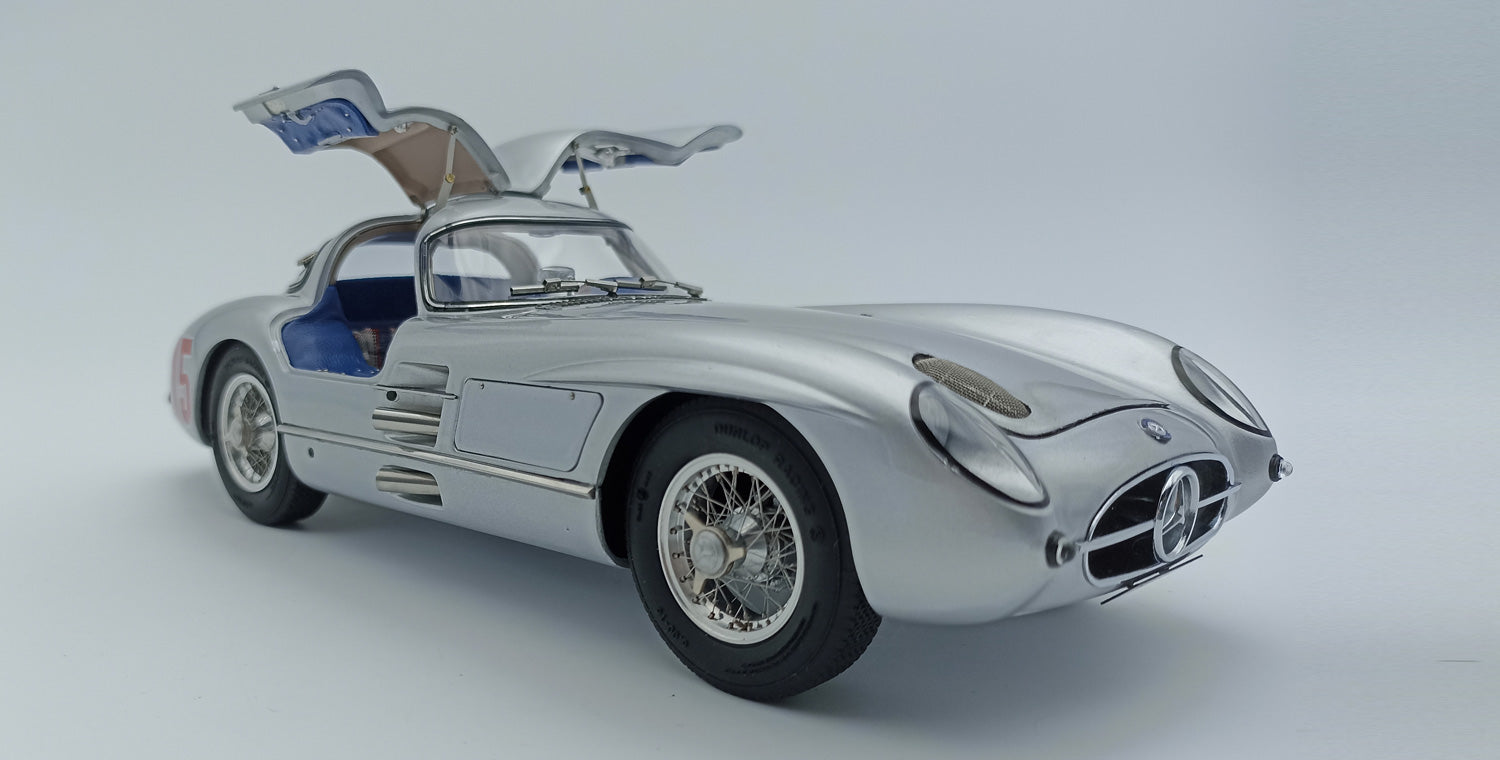
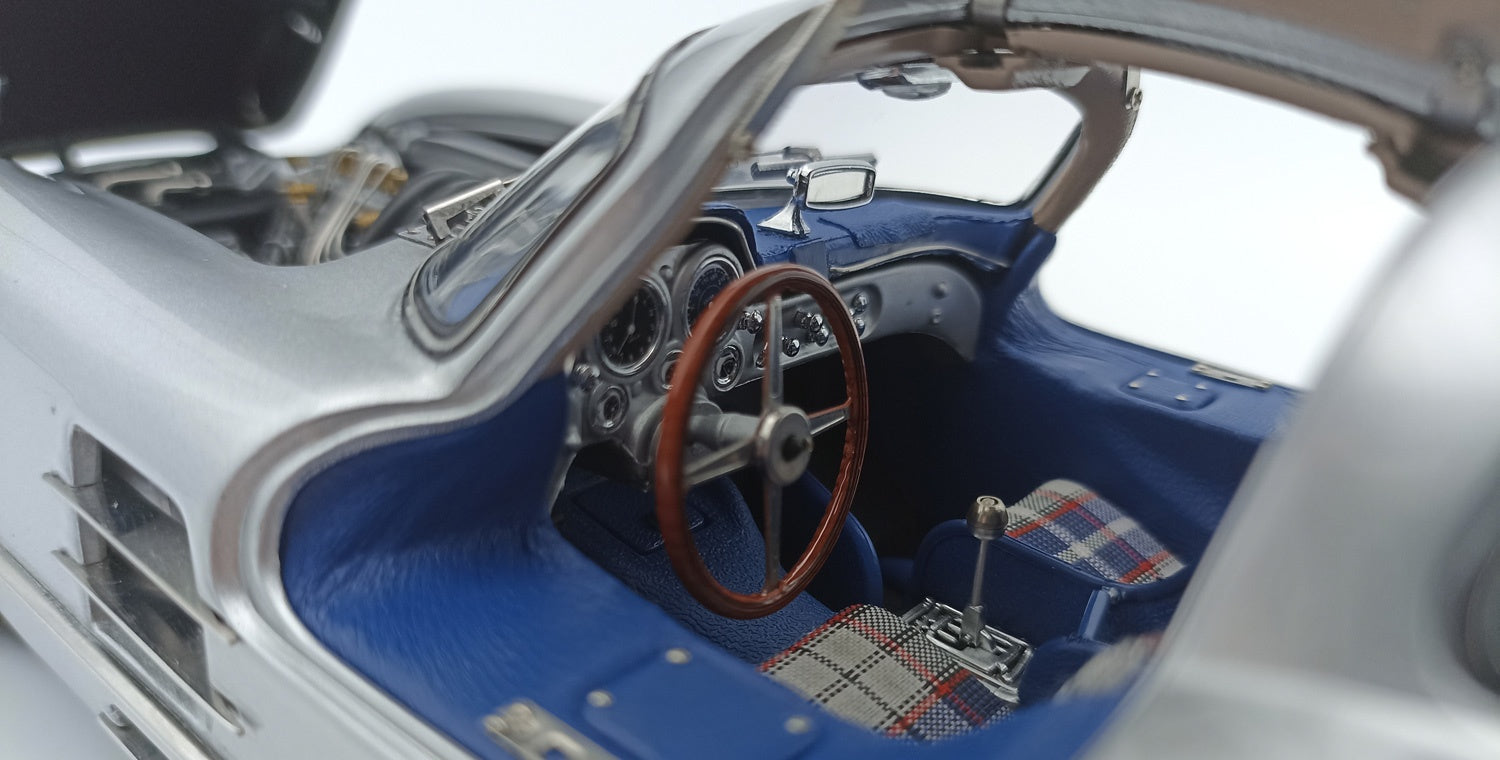

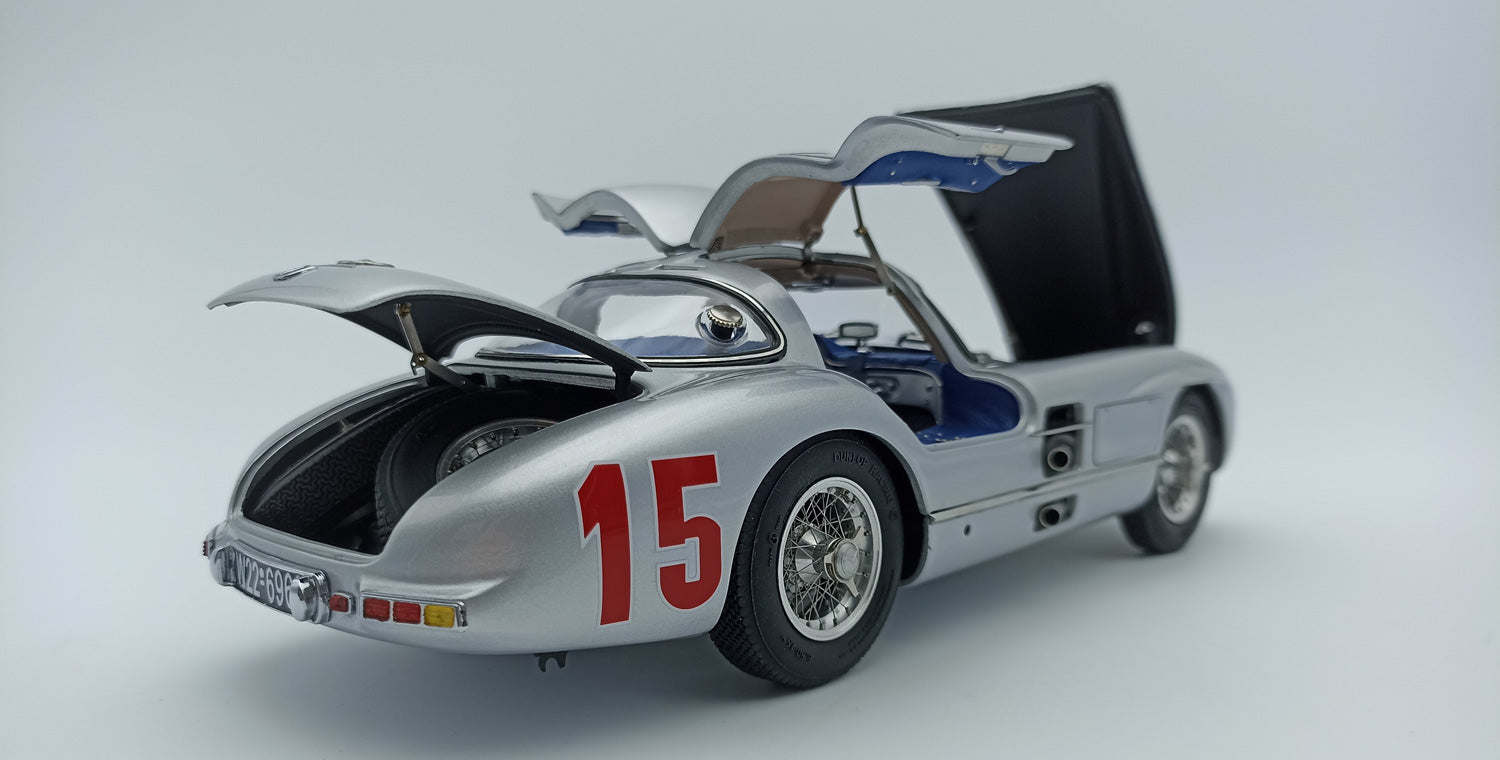
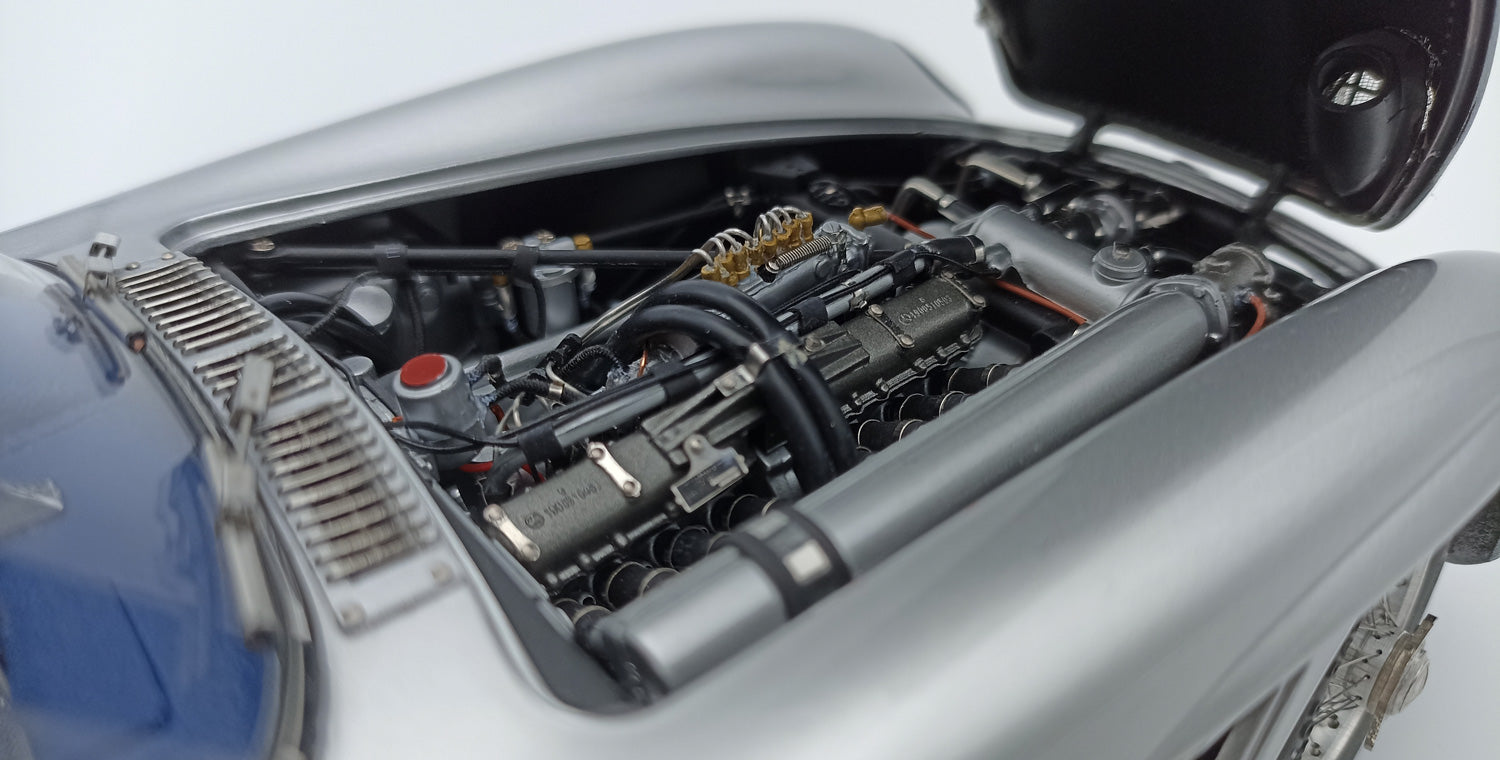
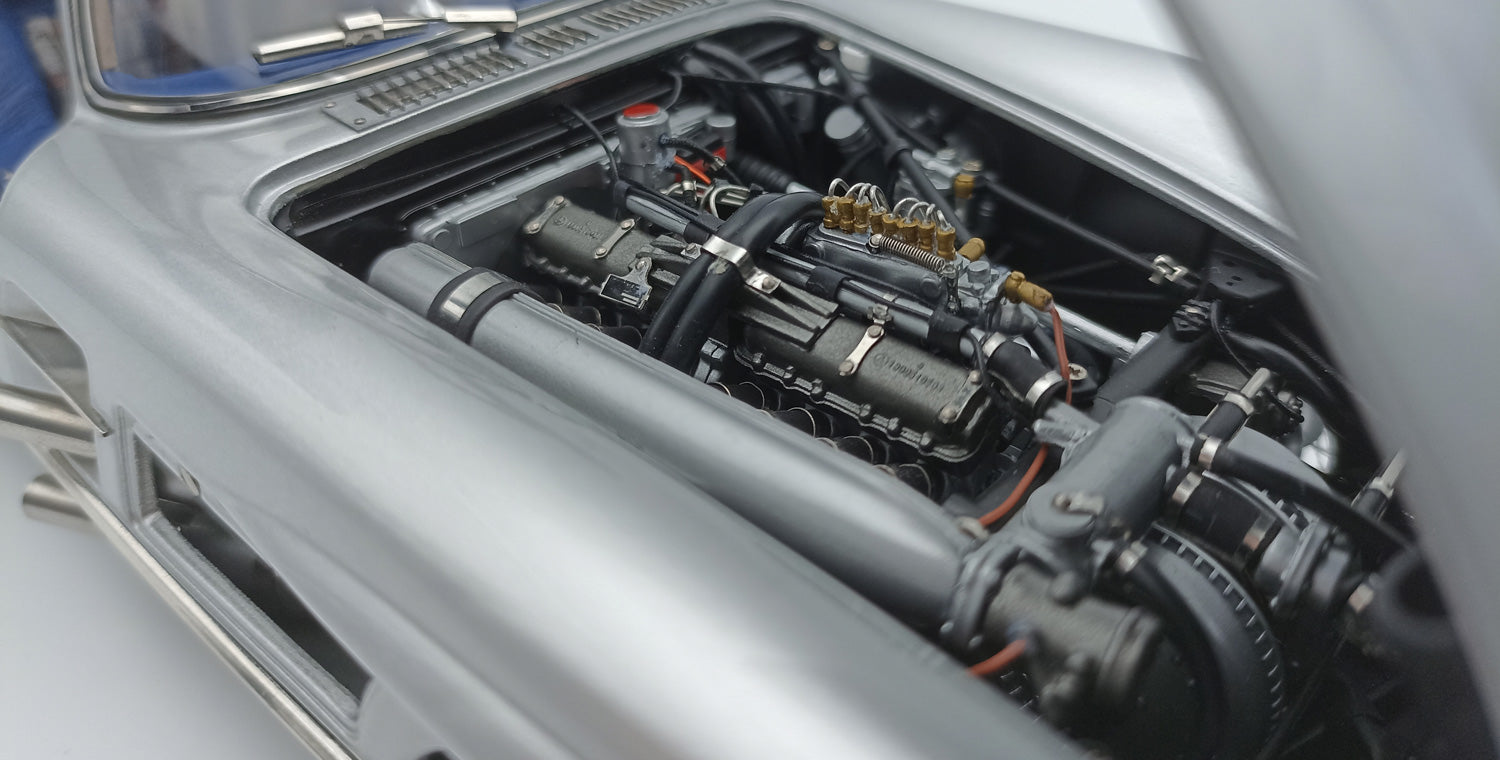
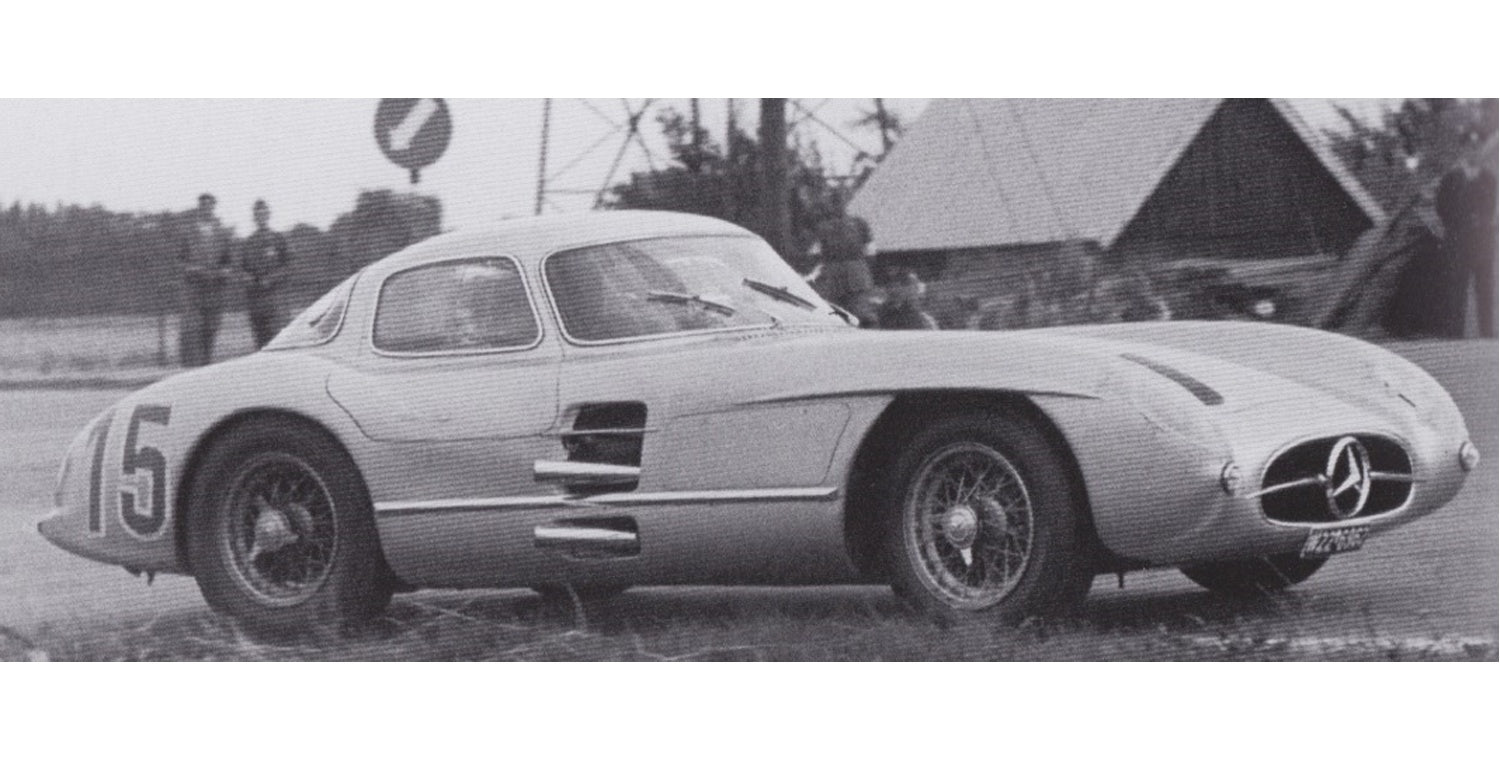
Mercedes-Benz 300 SLR Coupe #15 Swedish Grand Prix 1955 CMC M-244 LE 1000 pieces

Description
When Rudolf Uhlenhaut, the father of the 300 SLR racer, traveled to the Mille Miglia in 1955 to witness Mercedes' success first hand, he also considered equipping the 300 SLR racer with a closed cockpit for endurance events.
His ideas were realized in the form of a competition coupe with performance unmatched by any other road-going sports car. During a test on a closed stretch of highway near Munich, the two-seater reached a speed of 290 km/h. Impressed by its exceptional performance during a 3,500 km cross-country drive, the test reporter from the Swiss magazine Automobil Revue said:
"We're driving a car that takes barely a second to overtake everyone else, and for which 200 km/h on a quiet highway is barely more than walking pace. With its incredible handling in tight corners, the car seems to defy the laws of centrifugal force..."
The 300 SLR racer was based on the famous W196 Formula 1 championship car of the 1954/55 season. The abbreviation SLR stands for Sport Leicht-Rennen (Sport Light Racing). One of the most beautiful racing cars of all time, the new SLR was equipped with a slightly different inline eight-cylinder engine, enlarged to 3 liters. Two of the nine 300 SLR rolling chassis, 0007/55 and 0008/55, were converted into 300 SLR coupés with closed bodies and gullwing doors. They were intended for use in the upcoming Carrera Panamericana.
The body of the SLR Coupé was clad in Elektron sheet, a magnesium alloy that is even lighter than aluminum. The semi-circular windshield offered very little aerodynamic drag. As in the SLR racer, the coupé driver had to operate the pedals with his feet wide apart behind the steering wheel. Under the hood was a longitudinally mounted eight-cylinder engine, positioned directly behind the front axle, developing a maximum torque of 234 Nm at 5,950 rpm and a maximum power of 310 hp at 7,400 rpm.
Due to safety concerns following the tragic accident at Le Mans in June, Mercedes-Benz decided to withdraw from motorsport at the end of the 1955 season. As a result, the SLR Coupé project was shelved and never put into production. Rudolph Uhlenhaut subsequently took over one of the SLR Coupés as a company car.
With a weight of only 1,117 kg and a speed of 290 km/h, the Uhlenhaut Coupé was by far the fastest road car of its time in the world.
Although the 300 SLR Coupés were no longer used in competitive racing, chassis 0007/55 was no stranger to motorsport. It served as a test car for the works racing team at the 1955 Swedish Grand Prix in June and the RAC Tourist Trophy in September. At the Targa Florio, the final round of the 1955 Sports Car World Championship, a total of 16,695 kilometers of testing was carried out to familiarize the drivers with the 72-kilometer circuit and its 900 corners. The Mercedes team was no exception – Stirling Moss trained tirelessly at the wheel of chassis 0007/55. He damaged the car's right front wheel; the frame was warped at that point and the wishbones bent. But that didn't stop him and Fangio from achieving a one-two victory with their SLR racing cars at the Targa Florio on October 16, 1955.
Eight-cylinder in-line engine (installation angle: 33° tilt to the right)
gasoline direct injection
Desmodromic valve control (forced valves)
Chassis: front wishbone, rear single-joint swing axle
Power: 300 hp at 7,600 rpm
Displacement: 2,982 cc
Top speed: approx. 300 km/h
Wheelbase: 2,370 mm
Total length: 4,315 mm
Notice
When Rudolf Uhlenhaut, the father of the 300 SLR racer, traveled to the Mille Miglia in 1955 to witness Mercedes' success first hand, he also considered equipping the 300 SLR racer with a closed cockpit for endurance events.
His ideas were realized in the form of a competition coupe with performance unmatched by any other road-going sports car. During a test on a closed stretch of highway near Munich, the two-seater reached a speed of 290 km/h. Impressed by its exceptional performance during a 3,500 km cross-country drive, the test reporter from the Swiss magazine Automobil Revue said:
"We're driving a car that takes barely a second to overtake everyone else, and for which 200 km/h on a quiet highway is barely more than walking pace. With its incredible handling in tight corners, the car seems to defy the laws of centrifugal force..."
The 300 SLR racer was based on the famous W196 Formula 1 championship car of the 1954/55 season. The abbreviation SLR stands for Sport Leicht-Rennen (Sport Light Racing). One of the most beautiful racing cars of all time, the new SLR was equipped with a slightly different inline eight-cylinder engine, enlarged to 3 liters. Two of the nine 300 SLR rolling chassis, 0007/55 and 0008/55, were converted into 300 SLR coupés with closed bodies and gullwing doors. They were intended for use in the upcoming Carrera Panamericana.
The body of the SLR Coupé was clad in Elektron sheet, a magnesium alloy that is even lighter than aluminum. The semi-circular windshield offered very little aerodynamic drag. As in the SLR racer, the coupé driver had to operate the pedals with his feet wide apart behind the steering wheel. Under the hood was a longitudinally mounted eight-cylinder engine, positioned directly behind the front axle, developing a maximum torque of 234 Nm at 5,950 rpm and a maximum power of 310 hp at 7,400 rpm.
Due to safety concerns following the tragic accident at Le Mans in June, Mercedes-Benz decided to withdraw from motorsport at the end of the 1955 season. As a result, the SLR Coupé project was shelved and never put into production. Rudolph Uhlenhaut subsequently took over one of the SLR Coupés as a company car.
With a weight of only 1,117 kg and a speed of 290 km/h, the Uhlenhaut Coupé was by far the fastest road car of its time in the world.
Although the 300 SLR Coupés were no longer used in competitive racing, chassis 0007/55 was no stranger to motorsport. It served as a test car for the works racing team at the 1955 Swedish Grand Prix in June and the RAC Tourist Trophy in September. At the Targa Florio, the final round of the 1955 Sports Car World Championship, a total of 16,695 kilometers of testing was carried out to familiarize the drivers with the 72-kilometer circuit and its 900 corners. The Mercedes team was no exception – Stirling Moss trained tirelessly at the wheel of chassis 0007/55. He damaged the car's right front wheel; the frame was warped at that point and the wishbones bent. But that didn't stop him and Fangio from achieving a one-two victory with their SLR racing cars at the Targa Florio on October 16, 1955.
Eight-cylinder in-line engine (installation angle: 33° tilt to the right)
gasoline direct injection
Desmodromic valve control (forced valves)
Chassis: front wishbone, rear single-joint swing axle
Power: 300 hp at 7,600 rpm
Displacement: 2,982 cc
Top speed: approx. 300 km/h
Wheelbase: 2,370 mm
Total length: 4,315 mm


